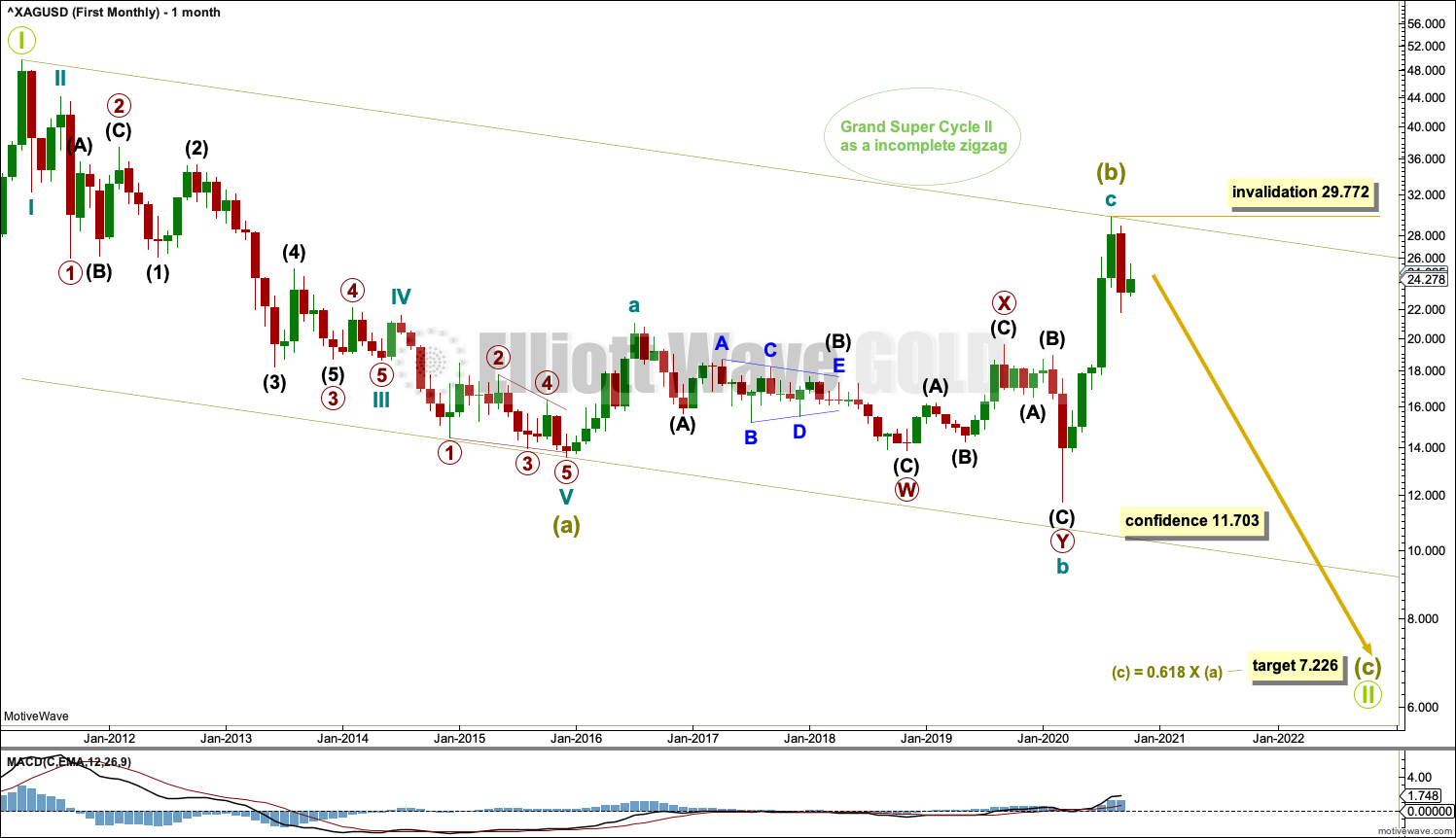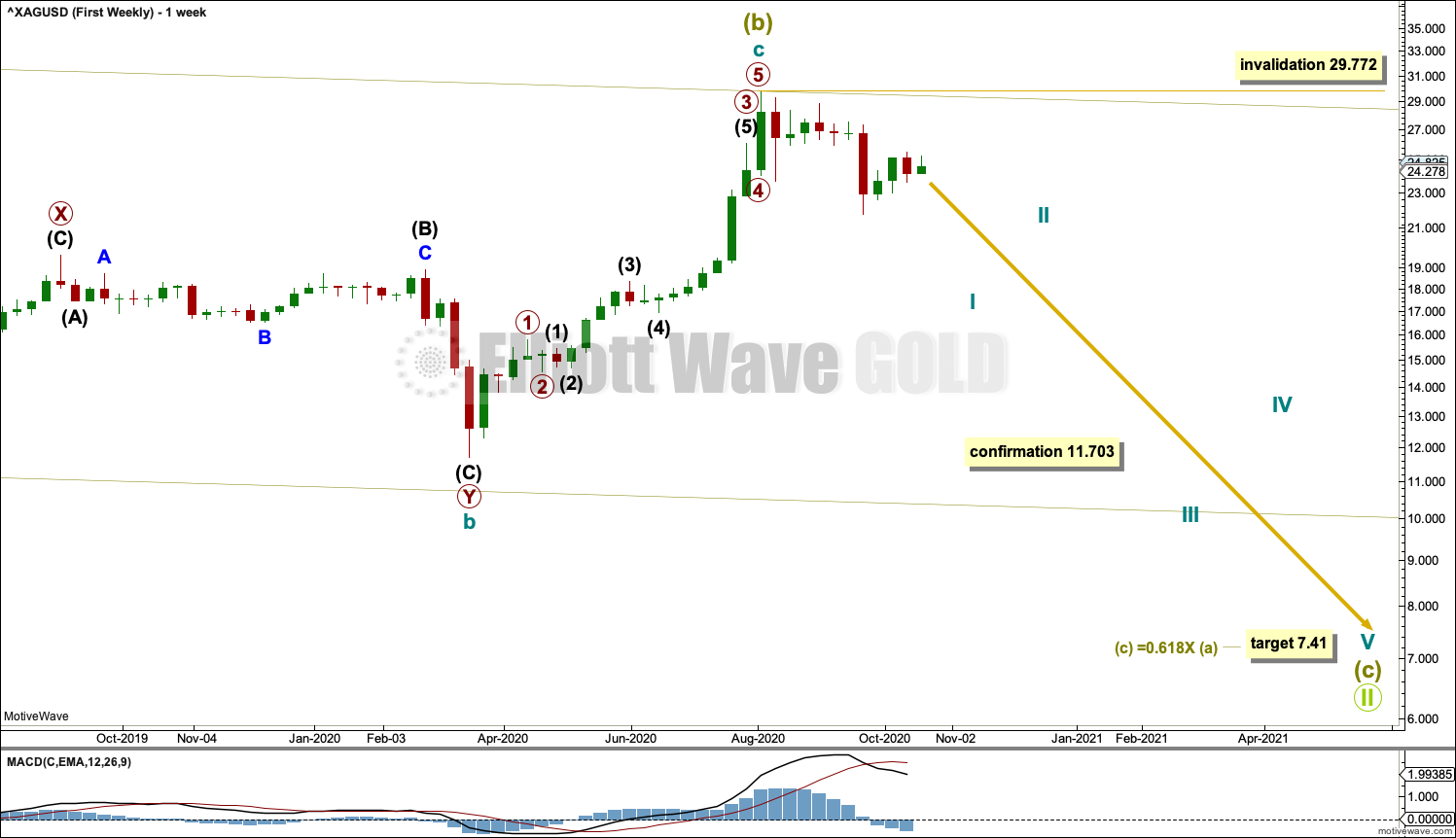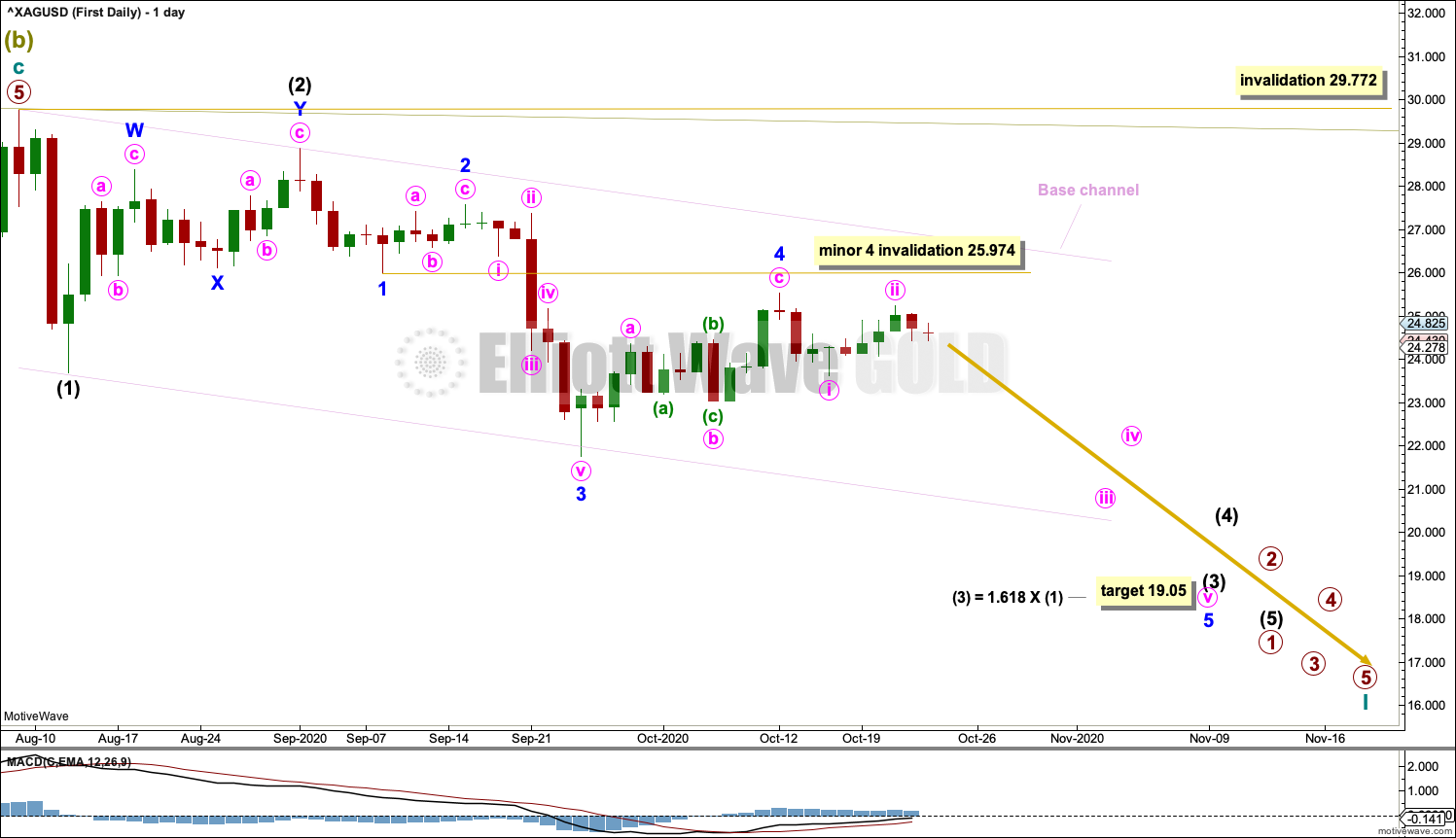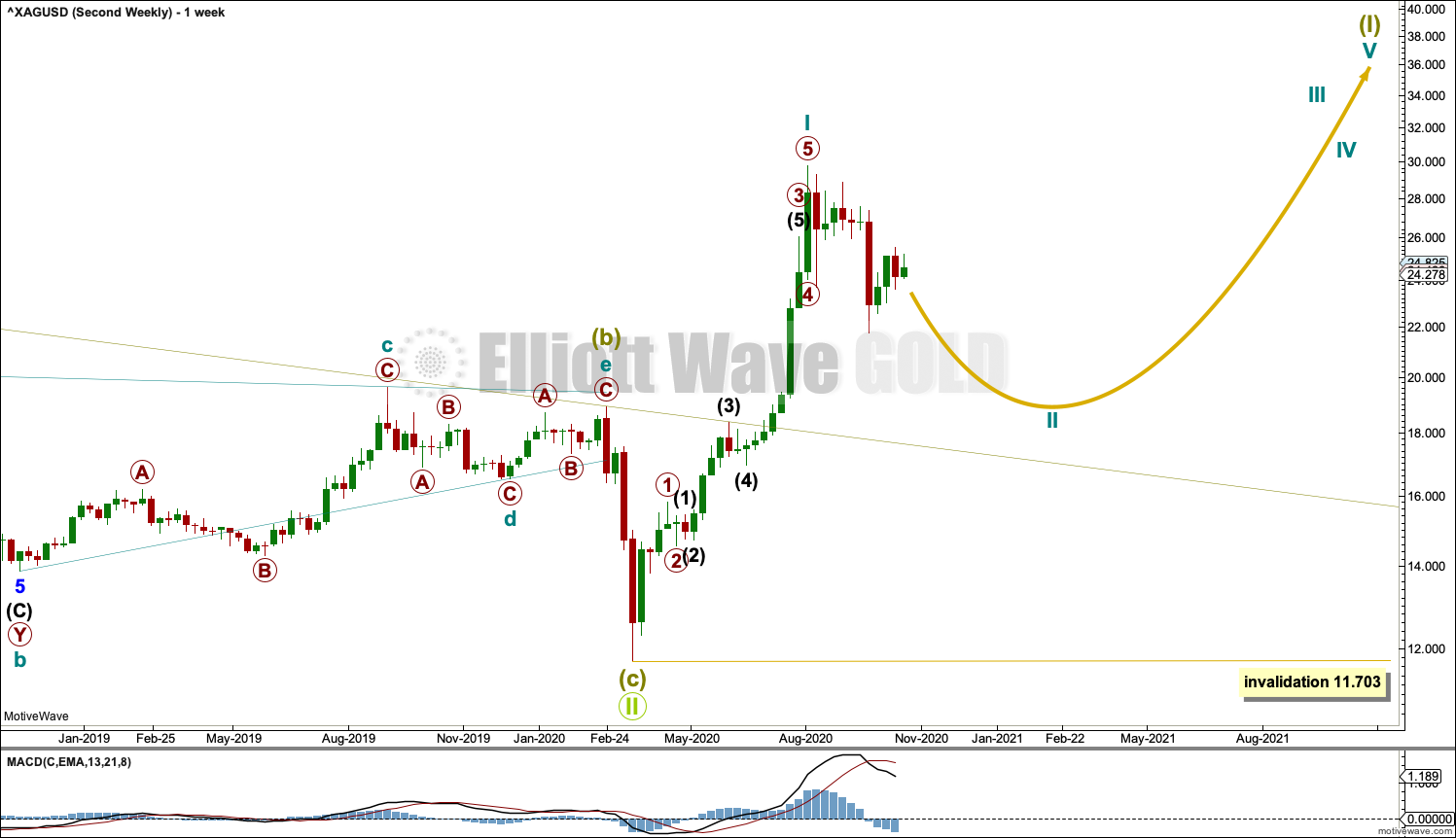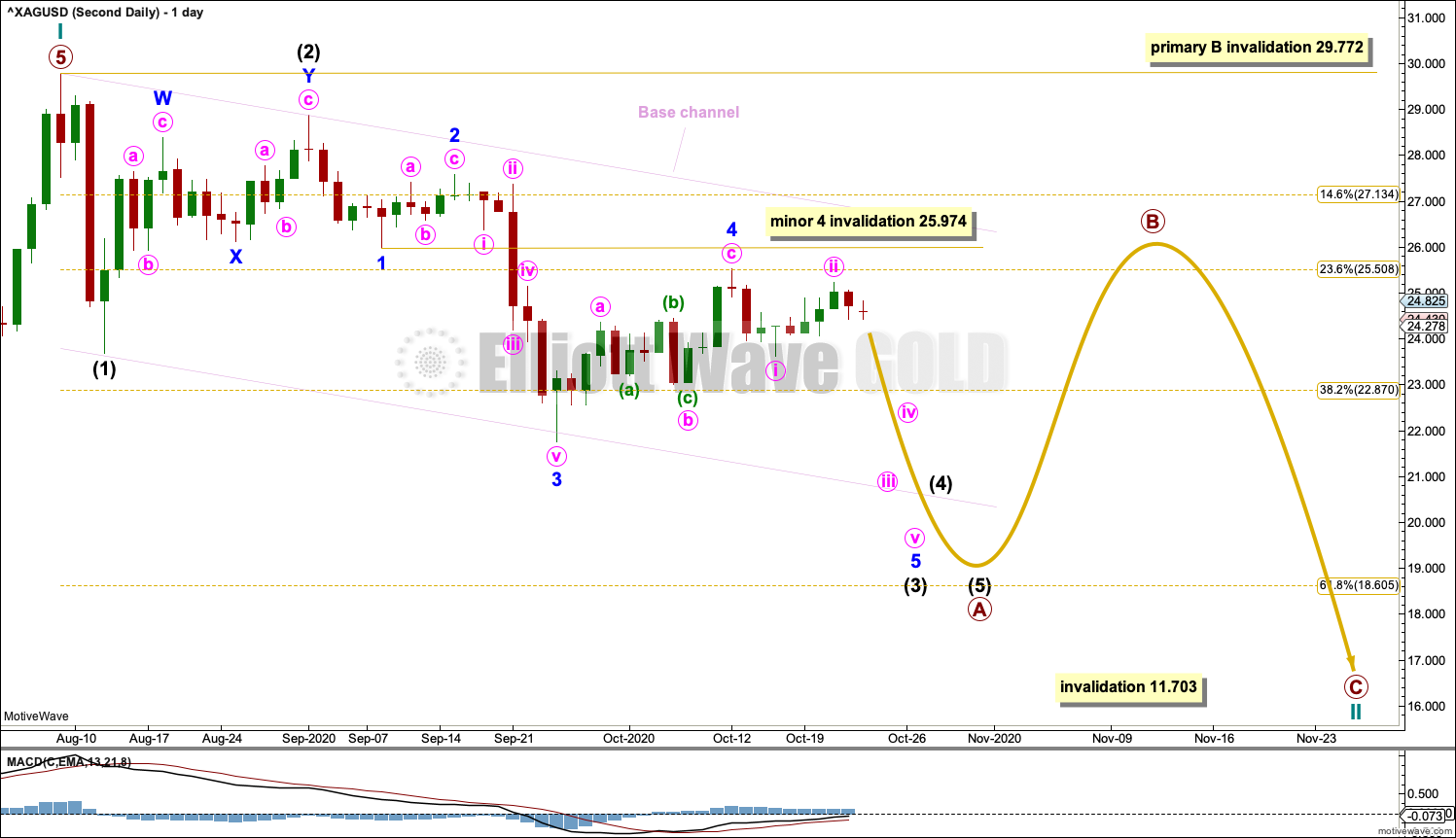SILVER: Elliott Wave and Technical Analysis | Charts – October 23, 2020
A very small range inside week leaves both Elliott wave counts the same.
Summary: The downwards trend may resume. A bearish flag pattern may be completing. A technical analysis target from the flag is about 18.68. An Elliott wave target from the first wave count is at 19.05.
The first wave count allows for new lows below 11.703. The final target is at 7.41.
The second wave count expects new highs substantially above 49.752 in coming years. For the mid term, a deep pullback may continue, which may end below 18.605. This wave count would be invalidated with a new low below 11.703.
ELLIOTT WAVE COUNTS
FIRST ELLIOTT WAVE COUNT
MONTHLY CHART
This first wave count has a better look in terms of Elliott wave structures. It may have a slightly higher probability. This is in line with the first wave count for Gold (overall).
It is possible that the zigzag for Grand Super Cycle wave II may be incomplete. Super Cycle wave (b) may have completed as an expanded flat correction.
Cycle wave b within the expanded flat of Super Cycle wave (b) is a 1.25 length of cycle wave a. This is within the most common range for B waves within flats of up to 1.38 times their counterpart A wave.
Cycle wave b within Super Cycle wave (b) subdivides as a double zigzag. This is a very common Elliott wave corrective structure, particularly in a B wave position. This part of the wave count has an excellent fit; all subdivisions are correct and the structures are common. This resolves the problem that the second wave count has of the triangle trend lines not being strictly adhered to.
A target is calculated for Super Cycle wave (c).
WEEKLY CHART
Super Cycle wave (c) must subdivide as a five wave structure, most likely an impulse. Cycle wave I within Super Cycle wave (c) may have begun.
Cycle wave II may not move beyond the start of cycle wave I above 29.772.
DAILY CHART
Cycle wave I must subdivide as a five wave structure, most likely an impulse.
A new downwards trend may have begun with two overlapping first and second waves labelled intermediate waves (1) and (2) and minor waves 1 and 2.
Minor wave 3 may be complete.
If it continues higher, then minor wave 4 may not move into minor wave 1 price territory above 25.974.
Minor wave 5 to complete intermediate wave (3) may exhibit further strength. For Silver, its fifth waves to complete third wave impulses one degree higher can be very strong. A target is calculated for intermediate wave (3) to end.
SECOND ELLIOTT WAVE COUNT
MONTHLY CHART
The bear market for Silver may be complete.
This Elliott wave structure for this bear market is labelled as a single zigzag for Grand Super Cycle wave II. Single zigzags are the most common Elliott wave corrective structure.
Within the zigzag: Super Cycle wave (a) subdivides as a five wave impulse, Super Cycle wave (b) subdivides as a complete regular contracting triangle, and Super Cycle wave (c) subdivides as a complete five wave impulse that is relatively brief and shallow.
Elliott wave triangles normally adhere strictly to their trend lines. The triangle for Super Cycle wave (b) does not; the lower b-d trend line is overshot, which reduces the probability of this wave count and is one reason for publication of the first wave count.
When charts are drawn on a semi-log scale, price has now breached the upper edge of the trend channel. Copy this channel over to weekly and daily charts. The upper edge of this channel may now provide support.
Grand Super Cycle wave III must subdivide as a five wave impulse at Super Cycle degree.
WEEKLY CHART
Grand Super Cycle wave II may be a complete zigzag. A new bull market may have begun for Silver.
The channel about Grand Super Cycle wave II is copied over from the monthly chart and extended outwards.
Super Cycle wave (I) may subdivide as an impulse or a leading diagonal. An impulse is much more common, so that is what shall be expected unless overlapping suggests a diagonal should be considered.
Cycle wave II may not move beyond the start of cycle wave I below 11.703.
DAILY CHART
Cycle wave I may be a complete five wave impulse. Cycle wave II may now begin as a multi-month pullback. Cycle wave II would most likely subdivide as a zigzag. A likely point for cycle wave II to end may be the 0.618 Fibonacci ratio of cycle wave I. If this target is wrong, then it may not be low enough. The first major correction within a new trend is often very deep.
Primary wave A may have begun. It may be subdividing as an impulse. Intermediate wave (3) within the impulse may now be unfolding lower. Minor wave 4 within intermediate wave (3) may not move into minor wave 1 price territory above 25.974.
If primary wave A does complete as a five wave structure, then primary wave B may not move beyond its start above 29.772.
TECHNICAL ANALYSIS
WEEKLY CHART
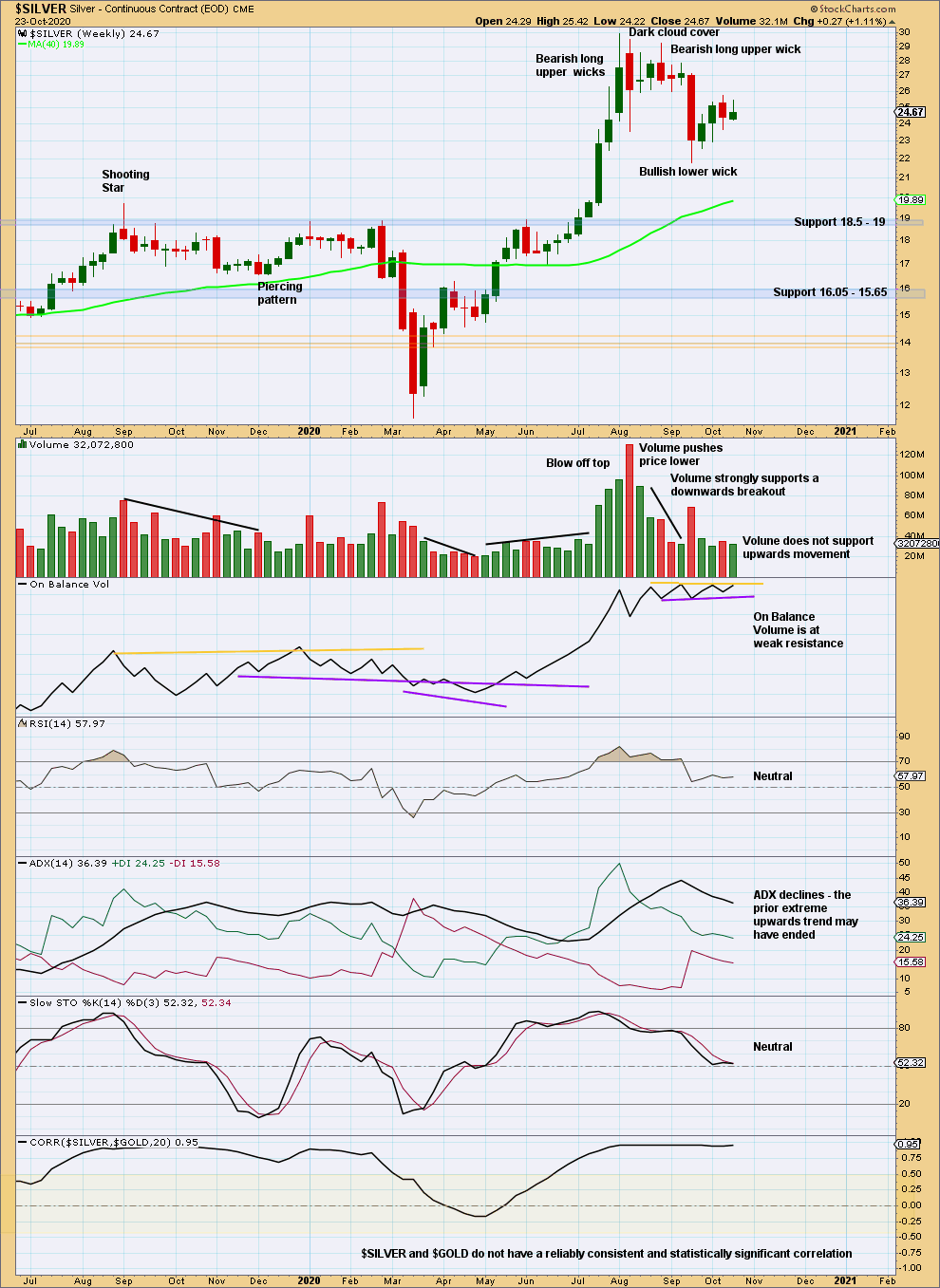
Click chart to enlarge. Chart courtesy of StockCharts.com.
The previous upwards trend reached very extreme and RSI reached deeply overbought. Now a bearish candlestick reversal pattern completes, which has support from volume. This bearish signal should be given weight in these circumstances. Either a 180° reversal or a time consuming consolidation may be expected here.
A downwards breakout from a small triangle has strong support from volume. This adds to the probability that a sustainable high may be in place and a new downwards trend may be in an early stage. Look for next support in a zone about 18.5 to 19.0.
DAILY CHART
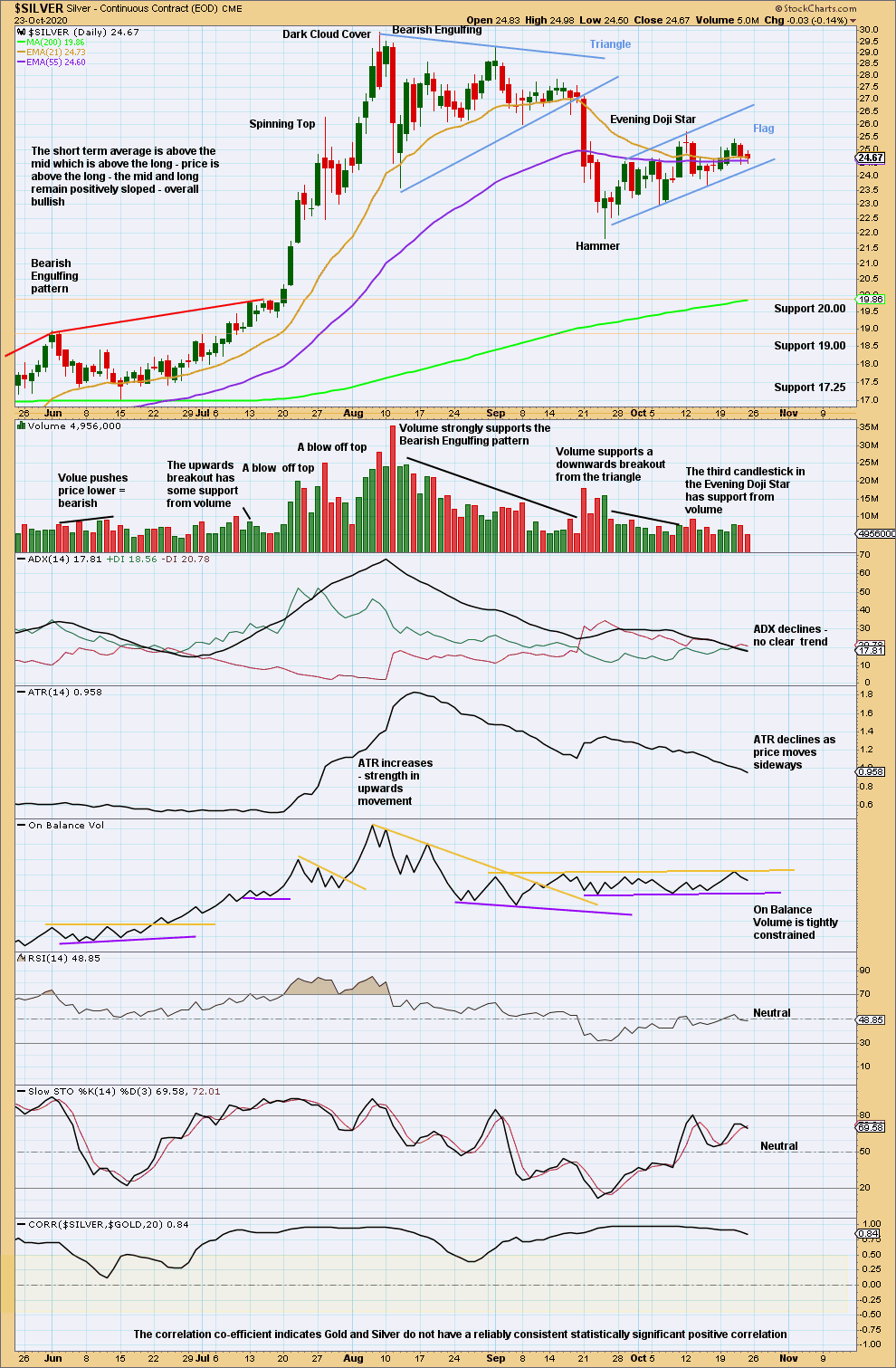
Click chart to enlarge. Chart courtesy of StockCharts.com.
A flag pattern may be forming. A target calculated from the flag pole is about 18.68.
The best performing flags and pennants complete within 15 sessions. So far this one has lasted 21 sessions. The performance and usefulness of this pattern has reduced.
The Evening Doji Star indicates a trend change. The third downwards session in the pattern has support from volume, which increases the strength of the bearish reversal signal.
Published @ 01:40 p.m. ET on October 24, 2020.
—
Careful risk management protects your trading account(s).
Follow my two Golden Rules:
1. Always trade with stops.
2. Risk only 1-5% of equity on any one trade.
—
New updates to this analysis are in bold.

